Help for heating systems! Circulation and heat pumps for home heating: prices, operating principle
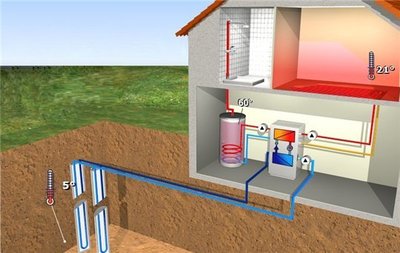
A heat pump is a device that is intended for the conversion of thermal energy, obtained from some source.
Such a device is the main link in geothermal installations.
With its help, not only energy is collected, but also concentrated and transmitted to the consumer.
Heat pumps for heating a private house: device and price
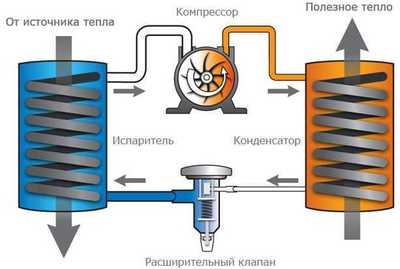
The operation of a heat pump is based on the same principle as that used to operate cold generating units.
However, unlike them, this one the unit operates for the purpose of obtaining heat.
Some of its constituent elements, such as the condenser and evaporator, perform slightly different functions than those they perform in a refrigeration machine.
Thus, in a refrigerator, the effect of temperature reduction is achieved by the method of heat extraction from a certain volume by the evaporator, and the work of the condenser contributes to dumping it into the surrounding space.. But, when applied to a heat pump, these elements operate differently. The evaporator operates in order to discharge the coolant having a low temperature. The action of the condenser is aimed at producing heat, which is intended for the needs of the consumer.
Reference. It should be noted that such a unit, due to the peculiarities of its design, produces thermal energy 3-5 times more the amount of energy it receives from the power grid. The part of the energy that is “additional” comes from an external source.
Among the advantages heat pumps include:
- Cost-effectiveness. This is achieved due to the fact that the device has high operating efficiency.
- No excessive equipment operating costsYou will only need to pay for the electricity required to operate the unit.
- Possibility of switching system operating modes. The heat pump can function both for heating (heating) the room and for cooling (air conditioning) it.
- Reliability. Due to the presence in the automatic control system, its special maintenance will not be required. And to perform certain actions, there is an instruction.
- Compactness apparatus and noiselessness his works.
- Individuality of the system. This means that the consumer can select a specific type of device, depending on what stable source is planned to be used for the purpose of extracting thermal energy. And also that there is an opportunity to perform various calculations (for example, the payback of a specific unit).
- In relation to such an installation Fire safety requirements have been simplified.
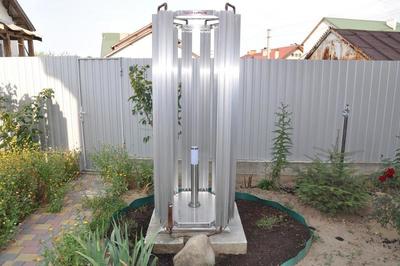
Disadvantages heat pumps include: the relatively high cost of the device itself and other elements of the system, complex and expensive installation of the geothermal installation.
In addition, the list of disadvantages of heat pumps includes low temperatures of water heated for heating.
Typically, these values are found within 50-60 °C.
Please note that if the installation of a geothermal system is carried out entirely with the use of credit funds, it may subsequently turn out that the cost of servicing the loan may exceed the amount which expresses the saving effect of its use.
Attention! Along with the increase in the temperature of the coolant in the internal circuit, the efficiency and reliability of the device is reduced.
The division of heat pumps into types depends on What method of energy extraction is used in a geothermal plant?
Soil-water
The fact that part of the thermal energy from the ground can be transported and used for the needs of the consumer is the principle on which the operation of a geothermal installation with the participation of a ground-water pump is based. Implementation of the heat extraction process occurs with the help of collectors or special probes. The energy obtained is transferred to the internal heating circuit via a pump.
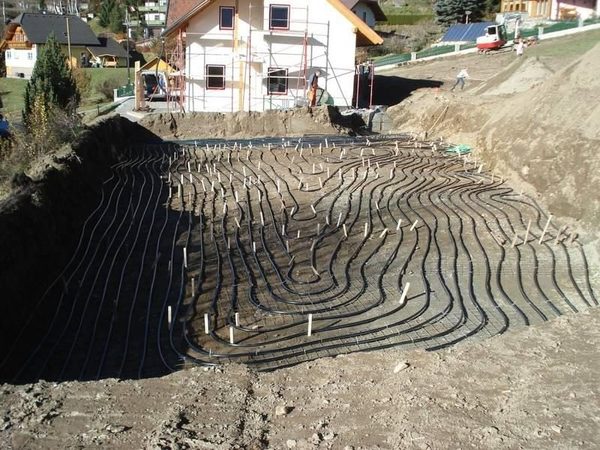
Photo 1. Installation of a heating system with a ground-to-water heat pump. A large pit is dug for the structure.
The coolant is liquids that are not subject to freezing. Thus, For this purpose the following are used: glycol mixture, water solution with salt or water mixed with alcohol. The parameters of the system are calculated depending on the area of the house being heated.
The approximate cost of a ground-water type device is: 202,000—250,000 RUR
Water-water
Just as in the case of soil, the temperature of water at great depths underground remains relatively high all the time, and - regardless of the time of year. With the help of a unit of the type "water-water" it is possible to use such a resource. Structurally, this type of heat pump is similar to the type "ground-water". However, - the installation of the entire unit is simpler.
The price of pumps is determined in a fairly wide range. For example, products from Chinese manufacturers cost: 1800-3300 USD, and European ones - 7800 USD, and higher. Many factors are taken into account when determining the cost of installing a system. On average, 5 thousand USD - this is the starting figure if well installation is required.
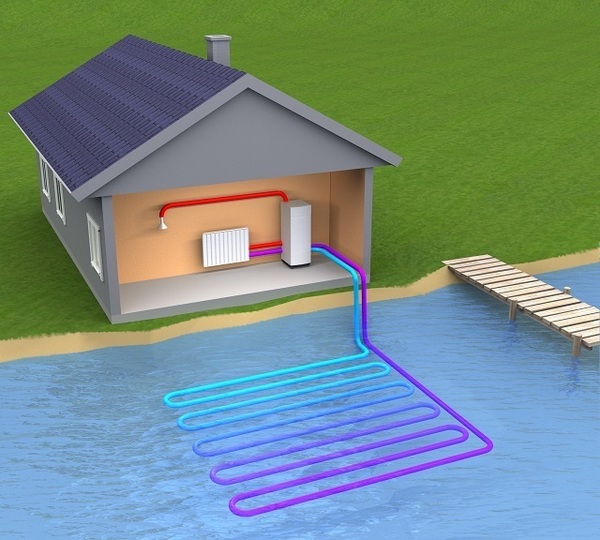
Photo 2. Schematic diagram of the structure of a heating installation with a water-to-water pump. Liquid from a reservoir is used as a heat source.
Air-water
Air masses are the resource for this type of device. And also secondary resources are suitable: exhaust air, gas, smoke. Functionally, such a unit uses a single complex that combines fans and evaporators.
The air contains some amount of thermal energy, even at sub-zero temperatures. The principle of the device is based on the fact that part of it can be removed from the air masses.
Important! It should be noted that the device is effective when the air temperature does not fall below the value -15 degrees Celsius. However, the situation changes for the worse (for the consumer) when the frost intensifies.
Average price 2 180 USD for a device with power 5.6 kW, 4,300 USD — 9.8 kW. The cost of installation works starts from 1700 USD.
Air to air
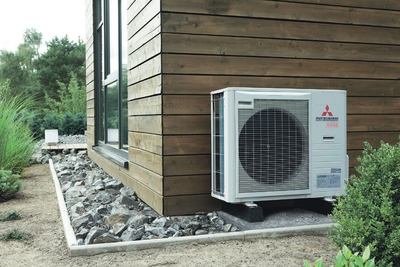
Structurally, the air-to-air vehicle is built the same as the air conditioner.
However, as a result of various improvements in relation to the latter, a device appeared whose operation is aimed at heating the room.
The cost of such units starts from 1800 USD The minimum price for installation work will be 150 USD
Circulation pumps for heating systems
The circulation pump is one of the most important elements operating in heating or water supply systems. Its work is aimed at ensuring that ensure the movement of liquid in a closed circuit by force.
For such devices there is a division expressing dietary dependence. There are those that consume energy in the form of alternating current (220 V) and, - powered by a source (usually uninterruptible) of direct voltage (12 V). There is also a division of pumps into models with automatic or forced air removal.
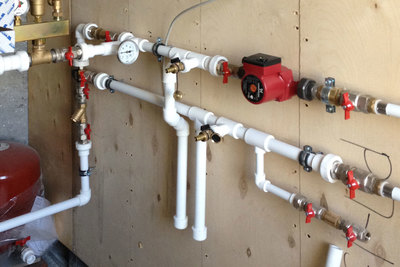
Bypasses provide the system with the following capabilities:
- transition to another operating mode (natural circulation);
- implementation of automatic or manual temperature control in a heated room.
According to the design differences, regardless of other parameters, the device can be classified according to the type of device to one of two optionsc. Let's consider them.
With dry rotor
A circulation pump of this type is distinguished by the fact that it contact of the coolant with the engine is excludedOnly the impeller is immersed in the liquid and is isolated from the rotor by means of gaskets and sealing rings.
Dignity is high Efficiency, which, depending on the model, 80-85%.
Essential disadvantage they think constant noise, which produces a working device. And also the need for periodic maintenance, which will be required for the purpose of updating and adding lubricant.
With wet rotor
A pump of this type is characterized by the fact that it contains liquid, which not only performs the function of lubricating parts, but also helps cool the engine, both the impeller and the engine itself are immersed.
Its advantages include the following features: does not require constant maintenance, has a decent motor resource, does not make noise. The device is durable, due to the cooling effect produced by the coolant.
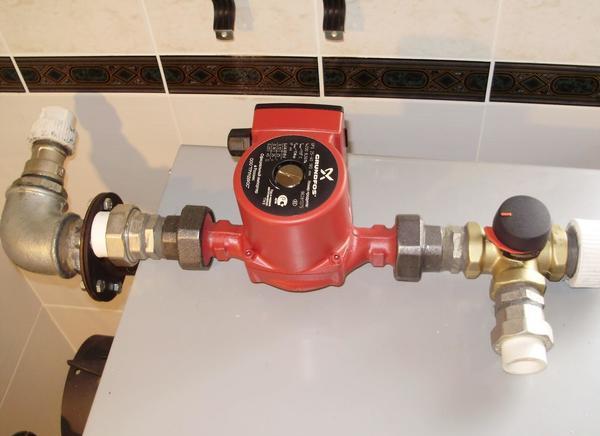
Photo 3. Circulation pump with a dry rotor. The device is installed on the heating system pipes.
The disadvantage is low efficiency (50%).
Useful video
Watch a video that explains how heat pumps work.
Conclusion
Heat pumps designed for home heating, are considered to be quite expensive equipment. Despite this, the use of such units can justify the money spent, which can pay off in the first few years of operation. Savings are achieved due to the fact that their further use will not require new investments.








Comments